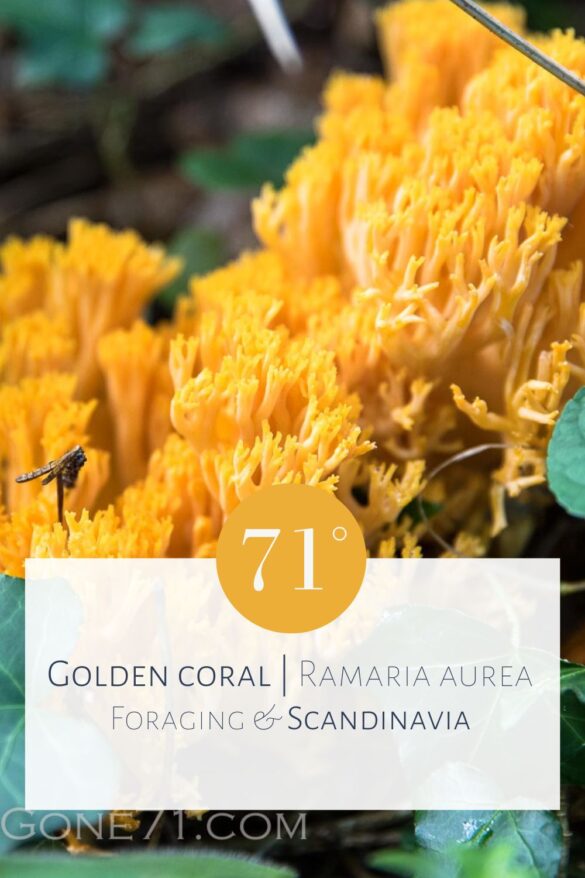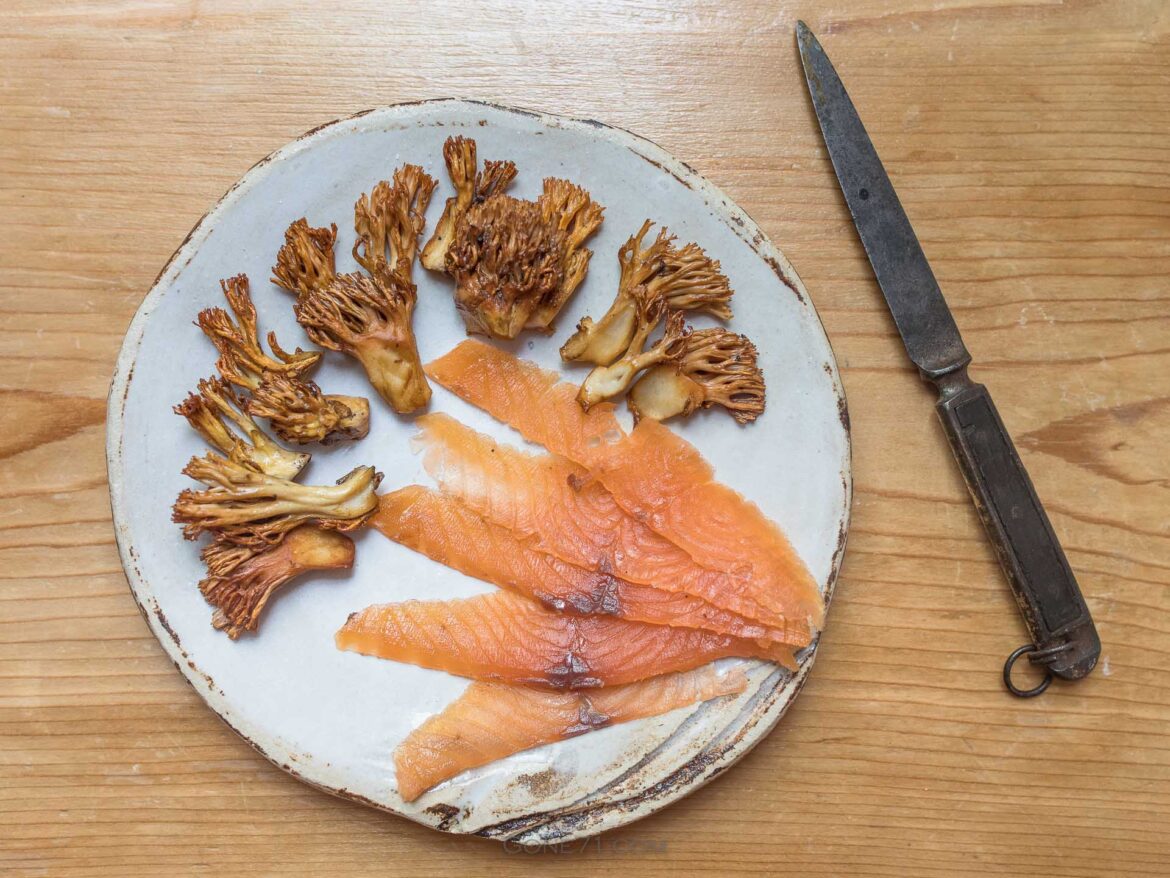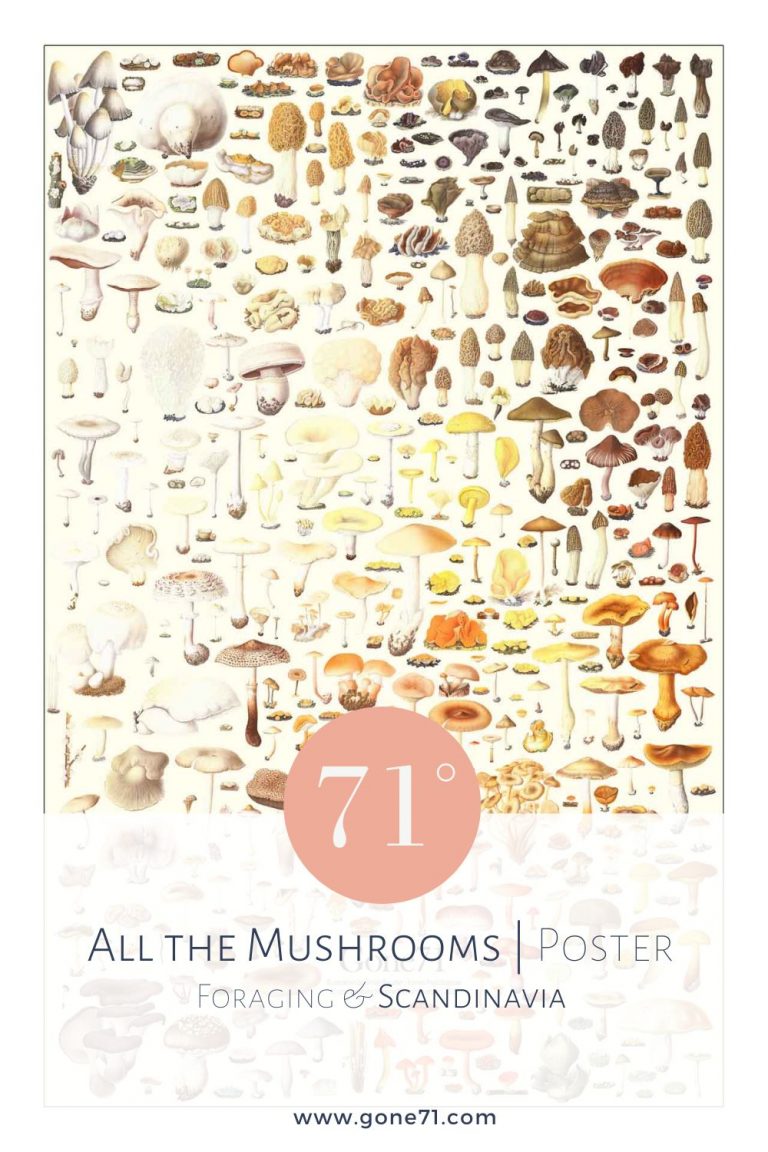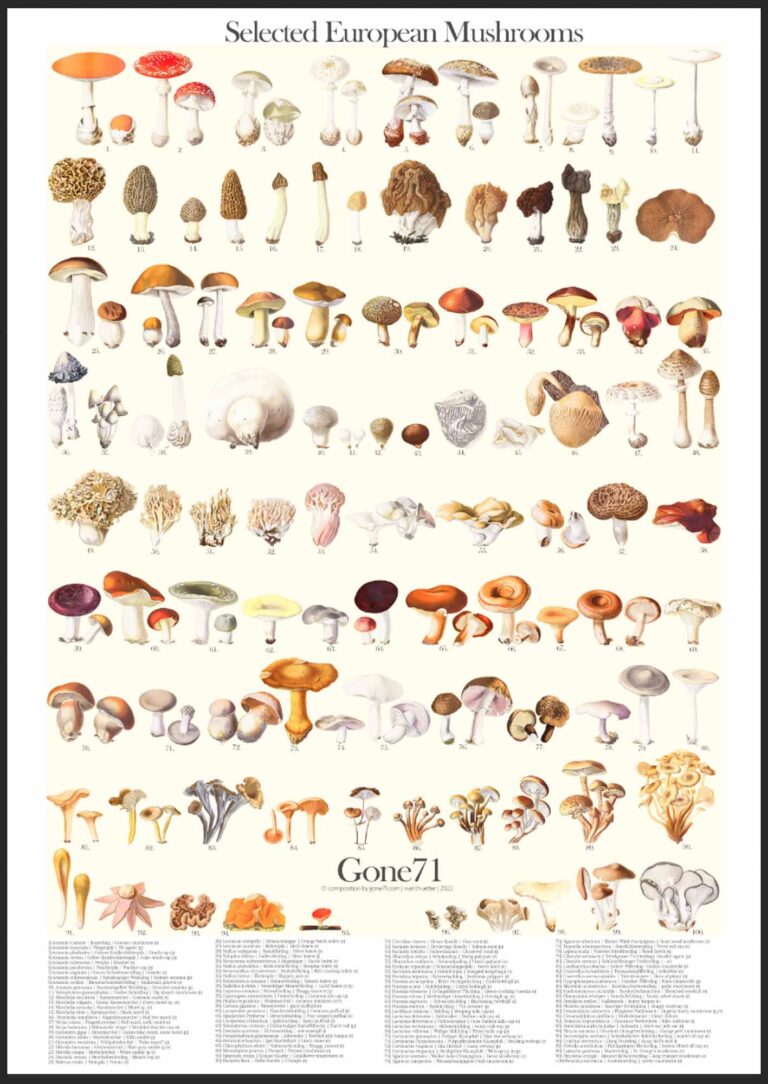swe.: Guld fingersvamp | nor.: Guld korallsopp | fin.: Keltahaarakas | dt.: Goldgelbe Koralle | sci. syn: Clavaria aurea, Ramaria flavobrunnescens sensu
The sight of these bright yellow structures in the forest is definitely a feast for the eyes. The delicate Y-shaped branches and striking coloring give it that distinctive coral look. In addition, due to their dense growth, they are usually quite free of dirt and insects. The only question left is how to find and identify them correctly.
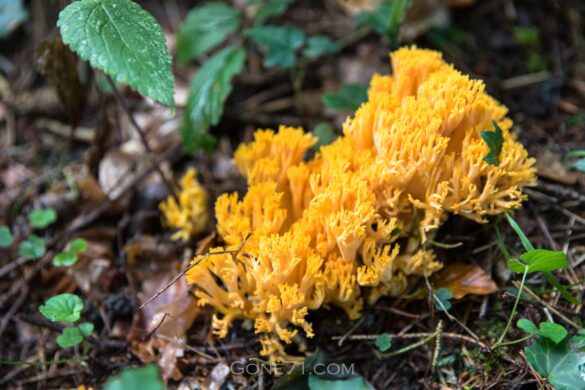
With coral mushrooms and edibility it is always a difficult subject. We even know some die hard mycologists who, due to the difficulty of identification, completely refrain from collecting this mushroom for culinary purposes. We therefore do not want to encourage anyone to collect this mushroom. Mixing them up can lead to severe stomach upset. However, we are not yet aware of any deaths caused by coral mushrooms.
Only harvest mushrooms that you can identify with 100% certainty! The consequences can be life threatening if you are wrong. If you have the slightest doubt: do not eat the mushroom! This is not a mushroom guide! For correct identification consult a mushroom expert.
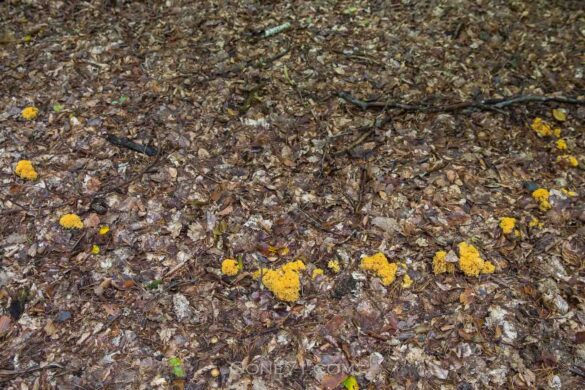
Appearance & habitat of the Golden coral (R. aurea)
Where to find the golden coral (R. aurea)
In Central Europe and Scandinavia, the golden coral (R. aurea) is perhaps the easiest species to identify. Its brilliant golden-yellow color usually distinguishes it from many paler and/or also pink-colored poisonous species. Nevertheless, caution is of course also required here.
Although this coral is often considered rare in the literature, it is very common in some places in Central Europe. In our experience, they almost never grow alone and it is worth looking for other specimens in the same area. They are almost impossible to overlook. Large fairy rings made of golden coral are also not uncommon. Once you have found a spot, you can return to that spot every year.
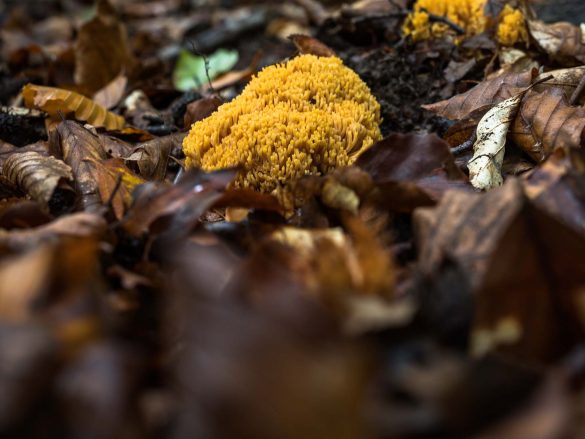
We mostly find golden corals in deciduous forests in the company of beech trees, but it also seems to be at home in the company of pine trees and spruce. In our experience, moist autumn conditions are by far the best time to hunt this mushroom. However, we found already specimen as early as June.
Appearance of the golden coral
The fruiting body can grow in clusters up to 20 cm in diameter. It divides from a thick, yellow stem into numerous branches that are forked or clipped at the end. The tips are golden-yellow as the rest of the mushroom. Sometimes the tips can be slightly salmon-coloured but usually they are of the same golden colour as the whole mushroom. In contrast to R. flave (goat’s beared), the stem is also of a yellow color and not white at the base. The meat is dirty white and slightly marbled. It has generally a neutral taste but can be slightly bitter in the tips.
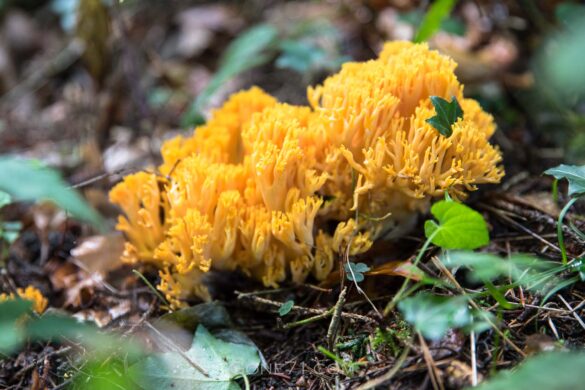
diameter: clusters of up to 20cm
months: July – October
colours: golden yellow
habitat: beech, pine, spruce
taste (raw): neutral, slightly bitter
consumption: cooked (poisonous raw)
Confusion of the golden coral (R. aurea) with other coral mushrooms
Confusion of the golden coral with the goat’s beard (R. flava)
The golden coral is very often confused with the goat’s beard (Ramaria flava). They look very similar and in the past these two species were treated as one. A distinctive feature is the stem that tends to be more yellow in the golden coral while Ramaria flava has a more whitish color. The goat’s beard also has a significantly lighter yellow color that is more reminiscent of lemon yellow. I have also found these mushrooms growing close together and in direct comparison the differences are then easier to recognize. The good thing is that R. flava is also one of the good edible mushrooms and a mix-up would be harmless.
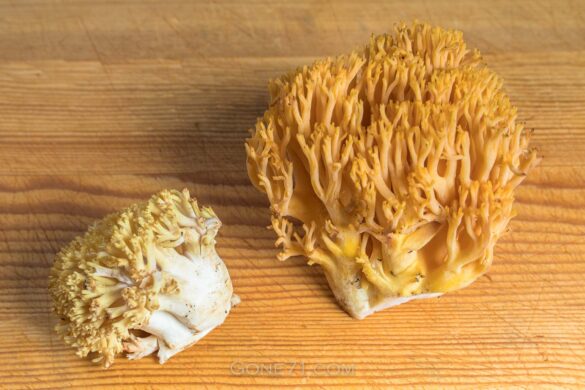
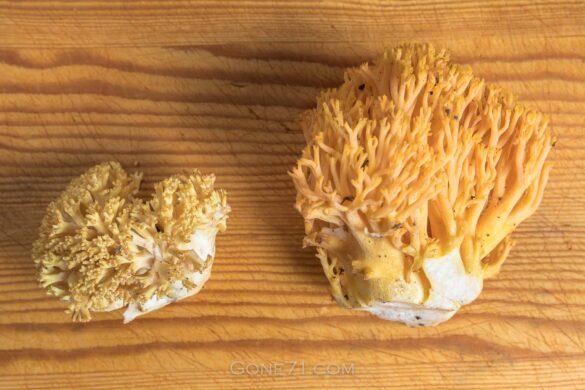
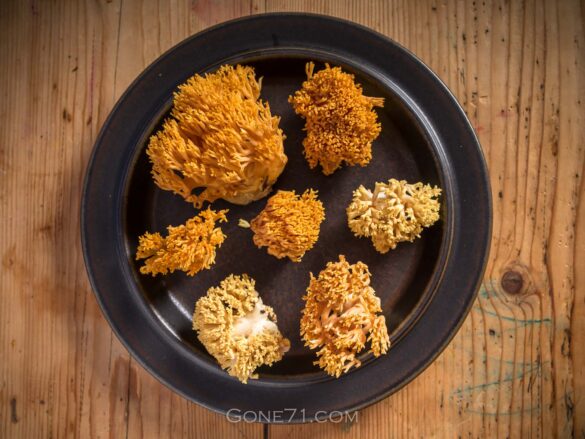
Confusion of the golden coral with R. flavescens and others
The golden coral and the problem with the fading colour
As if all of this wasn’t confusing enough, we have observed that the golden coral slowly loses color and fades in color after collection. After a night in the fridge, for example, it becomes very difficult to distinguish the color from other corals such as goat’s beard. An exact determination of corals must therefore be carried out on site if possible.
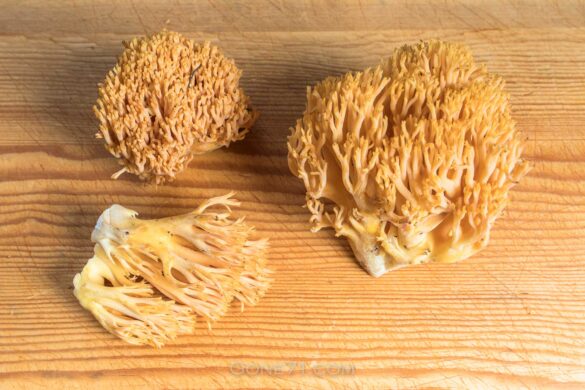
The golden coral in the kitchen
I always have great respect when I find golden corals and it took me a long time before I got involved with them in culinary terms. That said, it is an excellent mushroom to eat and pleasant to work with in the kitchen.
A special feature of these mushrooms is the fine structure that I try to preserve when cooking. Therefore, it is not simply cut into pieces or diced. I usually break the branches into smaller pieces for further processing.
Note that coral mushrooms can contain high levels of oxalic acid, which can cause nausea when raw. Make sure to cook well! Other than that, cooking golden coral is easy. As the mushroom pioneer McIlvaine recommended more than 120 years ago:
“Fry in hot butter, oil or fat until well done” Mcllvaine, 1901, S. 642.
Simple as that! There are many ways to prepare this mushroom. You can also think a little about vegetables such as broccoli or cauliflower, in terms of preparation. Baked with egg, like the cauliflower mushroom (S. crispa), also works wonderfully. The important thing is that the coral is well cooked.
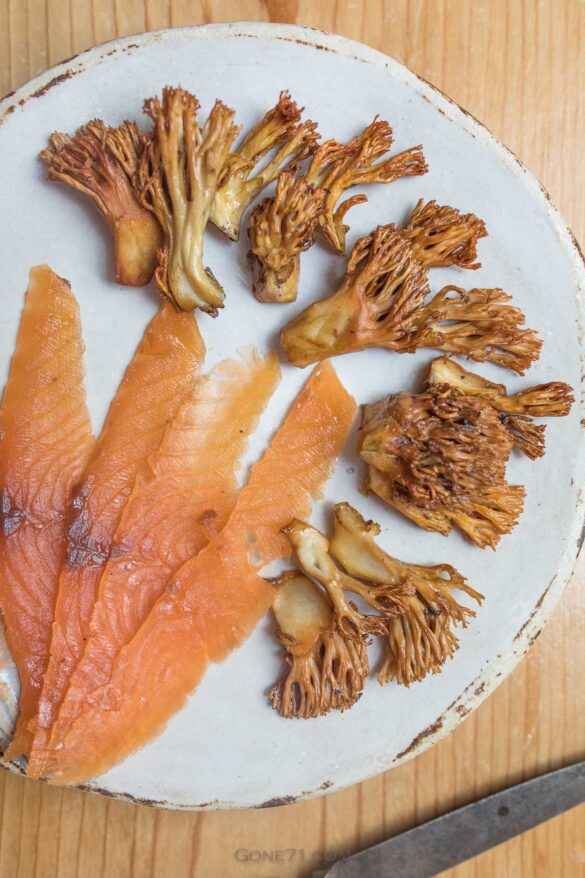

Fried golden coral (R. aurea) with smoked atlantic salmon
Ingredients
- 400 grams of golden coral (R. aurea)
- 100 grams of smoked salmon
- butter
- salt pepper
Instructions
- Free the fungus from insects and dirt
- Divide the mushrooms into bite-sized branches
- Fry in butter for at least 10 to 15 minutes.
- Season with salt and pepper
- Cut the atlantic salmon into thin slices with a filleting knife
- Serve together
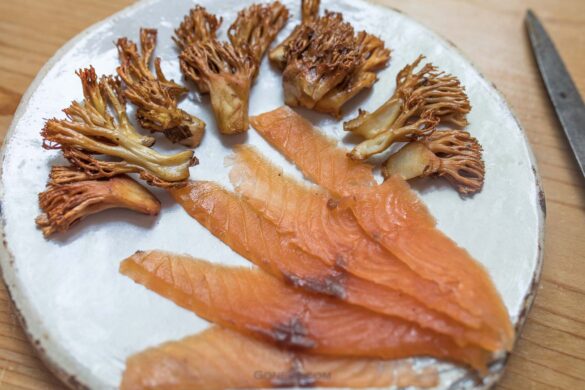
We have compiled this overview with the best of knowledge and belief, but do not claim to be complete and reserve the right to make errors.
Learn more about poisonous mushrooms and mushroom poisons here
↓↓↓
Find some inspiration in other mushroom recipes
↓↓↓
